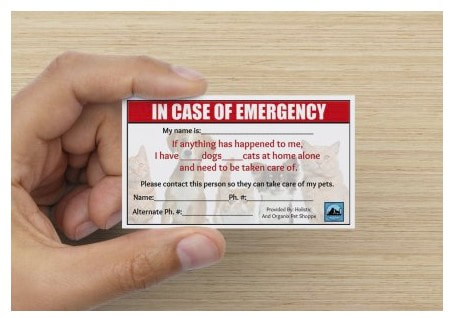|
By Vetinfo
Sciatica in dogs is a health condition that is characterized by pain the lumbar area that radiates to the legs. The pain appears when the sciatic nerve, which is also known as the ischiadic or ischiatic nerve, gets damaged. This nerve makes the connection between the legs and the brain through the spinal cord. When the sciatic nerve gets damaged, the signals are no longer transmitted to the brain, so the dog is unable to move his legs. Causes of Canine Sciatica Routine vaccinations and other types of shots represent one of the possible causes of sciatic nerve damage. Such shots are frequently given in the back of the thigh. The muscles from this area surround the sciatic nerve, so the needle may hit it when giving the shot. The medication that is injected is also able to influence the condition of this nerve. Sciatica may also develop if the dog gets hit by a car, for example, and the nerve gets damaged as a consequence of the physical impact. |
|
Canine Sciatica Symptoms
Keep in mind that the condition can be noticed only on one side, case in which only one leg limps, or on both sides, causing both back legs to be dragged. As the sciatic nerve is damaged, the pain in the lumbar area and the back legs is the main symptoms of canine sciatica. If the health problem affected the dog for a long time, muscle atrophy can be noticed. In some cases, the dog may have difficulties while passing the urine or while defecating. Such difficulties include: Constipation Inability to urinate Incontinence Such symptoms should prompt the dog owner to contact a veterinarian as soon as possible, as they indicate that sciatica is in an advance phase. |
|
Diagnosis of Sciatica
This health condition is diagnosed by analyzing the changes in the pattern of movement of the dog. Additional examination procedures may be necessary for confirming the diagnosis. The changes in the movement pattern are best observed when the dog is running or trotting. Due to the pain that is felt, the dog will hesitate to put its legs underneath itself and to touch the ground with the paws. The atrophy of the muscles should also be assessed, as the lack of activity that results from the pain often leads to a loss of the muscle mass. Muscle atrophy occurs when the segment of the nervous system that leads to the muscles are affected. Palpating the back of the dog will also help the veterinarian to determine if the sciatic nerve has been damaged. The increased pressure will determine the dog to react when the affected area is touched. |
|
Treatment of Sciatica in Dogs
Depending on how serious the condition is, the veterinarian may suggest various treatment options. Sometimes, a surgical procedure may be recommended, but keep in mind that an operation does not always have good results. After going through a surgery, the dog must be allowed to rest. Physiotherapy is a highly recommended part of the postoperative recovery, as the dog needs to regain his normal functionality and activity levels. |
**Canine Arthritis And Joint is intended for informational, educational and entertainment purposes only and is not a substitute for medical advice, diagnosis or treatment. Do not attempt to self-diagnose or treat any health condition. You should always consult with a healthcare professional before starting any diet, exercise or supplementation program, before taking any medication, or if you have or suspect your pet might have a health problem. The opinions expressed by Canine Arthritis And Joint are not to be replaced for medical care. This website and the information contained herein have not been evaluated by the Food and Drug Administration. The information and opinions on Canine Arthritis And Joint are not intended and cannot be used to diagnose, treat, cure, or prevent any disease. This applies to people and pets!
This site uses affiliate links such as banners you may see that allows for paid commissions.
This site uses affiliate links such as banners you may see that allows for paid commissions.
Canine Arthritis And Joint © Copyright 2015-2024
Designed By Paw Prints Web Design
Designed By Paw Prints Web Design









